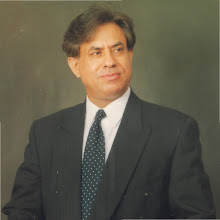Human aging is being controlled and researchers have proven that human cells can be created and in this century people will begin to live 100, 200 or even 300 years. Mice are already living 50% longer with the help of genetic inventions. Thanks to the human genome project, scientists are closer to identifying ways to decelerate human aging. Contrarily, with incompetent, insufficient, and laughable healthcare system in place, Pakistan seems to continue grappling with policy lapses. Due to factors related to high fertility rates, high illiteracy, high mortality, and above all uncreative methods of policy planning, Pakistan stands as a stranger to such a milieu. Its policymakers don’t even sense the world passing through a profound transformation. They lack their understanding for making decisions to understand forthcoming breakthroughs and strategically plan for new environs.
The rapid pace of technology and medicine are quickly posing the prospect of banishing aging and disease, and yes even most causes of death. Some of the most extreme but very possible aspects of technologies such as molecular manufacturing and nanomedicine promise continual cellular maintenance that will alleviate aging altogether and make it impossible for disease or toxins to injure one's body or take one's life. Present anti-aging treatments do not slow aging and do not extend life span more than quitting smoking, exercising, eating vegetables, or heeding ordinary medical advice does. While all over the world we have seen improvements in health and life spans, Pakistan has large gaps and much effort needs to be spent in narrowing that gap.
Although vainly wrestling with high female mortality at younger ages and during the reproductive years, Pakistan claims a life span of 65. This predominantly seems farce when almost one-half of women receive no antenatal care during their pregnancy and 72 percent receive no postnatal care at all.
The advancements in longevity can be generally attributed to improvements in sanitation, the discovery of antibiotics, and medical care. Despite tall claims, Pakistan’s record on these areas is hopeless. Now, as scientists make headway against chronic diseases like cancer and heart disease to extend anti-aging even further, such diseases in Pakistan are greater than ever and basic healthcare service is inaccessible to a vast majority.
There are theories on aging. The programmed theories hold that aging follows a biological timetable, perhaps a continuation of the one that regulates childhood growth and development. The damage or error theories emphasize environmental assaults to our systems that gradually cause things to go wrong.
Lengthening life expectancies in the industrialized nations are bringing about substantial changes including large increases in the number of elderly and in their proportion in the population. Such changes have occurred, for example, in the type of economic activity, housing, social services, and population make-up of the communities. With growth in the health care system and changes in the service mix provided, the elderly continue to consume more health care per capita and need different services.
Health care institutions, including hospitals, which are widely expected to experience increasing demand as the elderly population grows; organizations will provide home-based medical care and other types of assistance, allowing the individual to remain in their own residence; and a variety of assisted living facilities, ranging from adult day care to residential care to nursing homes.
Of greater concern, the already awful health care industry of Pakistan finds itself ill prepared to handle significant increases in the number of the very elderly. Today, there are almost 9.7 million senior citizens. When it has no policy in place for this population today, it has no concern for tomorrow. Neither public nor private sectors are equipped financially to deal with the problems caused by aging population. When a society starts aging, its economic vitality becomes inferior to that of young societies and sluggish economic growth reduces its opportunities to become well heeled. Thus, in Pakistan an aging population will become a heavy public burden, forcing its people to bring down the cost by establishing large institutions so that, by virtue of economies of scale, they could manage to provide the elderly with the most basic care and medical needs.
The health sector of Pakistan offers an inadequate remedy for the serious problems of an outdated and basically unsound system and hence needs an offensive. People must be offered a vision of a revitalized health care system that provides incentives for increased quality and technological innovation, while at the same time, reducing costs. Pakistanis need a system that gives them control over healthcare decisions, while encouraging them to set aside the resources they need to purchase this care.
The policy makers of Pakistan should keep themselves abreast of technological advances and management strategies by constantly scanning the literature and media, interviewing authorities, and drawing on other sources to identify emerging trends. These trends then need to be analyzed to select those that are most significant.
It needs to begin to prepare now for what will be a very different future. The key questions it needs to think about include: What is it that we should be asking? What is it that its policymakers need but do not get in their human development courses? People should be asking about connections -- connections between existing mindsets and human development. These connections simply are not made in most textbooks available for use in human development courses. In fact, effective change requires more than knowledge of human development. Effective change also requires the ability to devise strategies that take advantage of that knowledge … strategies for connecting research and practice. (www.asifjmir.com).
A Distinct Candle is Extinguished!
-
“I am announcing, with a heavy heart, the sudden demise of my beloved
father, Asif Javed Mir, due to heart failure on 18th December,2013. I
request to ever...
11 years ago





No comments:
Post a Comment